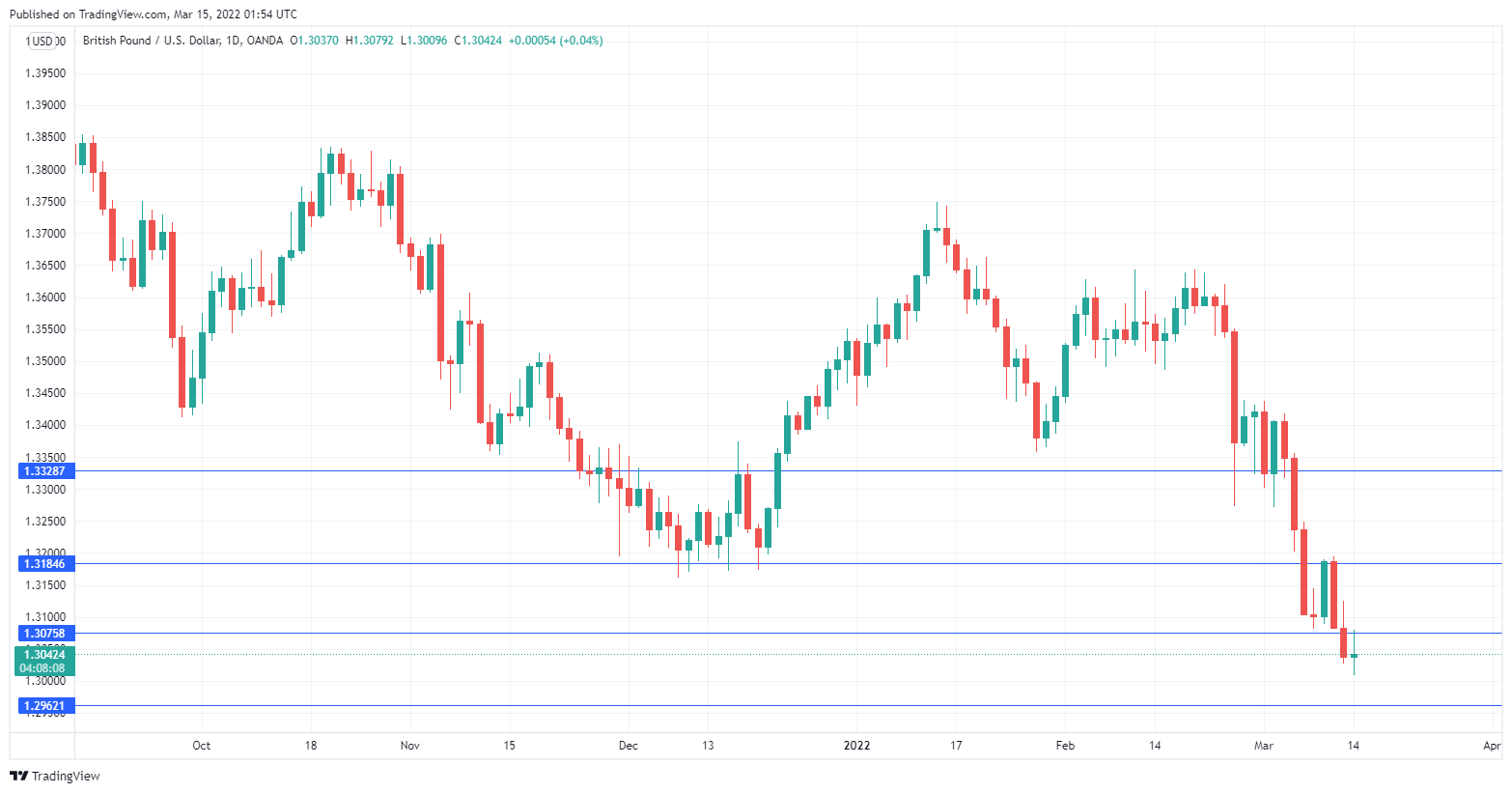GBP/USD is steady at the start of the week. Last week, the pound fell 1.51%, marking a third straight week of sharp losses.
Earlier in the day, GBP/USD touched a low of 1.3009, as it struggles to remain above the psychologically important 1.30 line, which has held since November 2020.
UK job data expected to improve
The UK releases key job numbers on Tuesday, with expectations of a strong release. Unemployment is expected to fall by 28 thousand, after a drop of 31.9 thousand in January. The unemployment rate is forecast to drop from 4.1% to 4.0%, while wages are projected to climb 3.7% for a second straight month. A strong employment report could give the pound a badly needed boost.
The UK posted better than expected numbers on Friday, although this wasn’t enough to stem the pound’s slide. GDP for January jumped 0.8% MoM and a sizzling 10.0% YoY. Manufacturing Production for January also rose 0.8% MoM and 3.6% YoY. The strong numbers are further indication that the UK economy continues to perform well.
Investors are looking ahead to the Bank of England’s policy decision on Thursday. The markets are expecting the central bank to hike by a 1/4 point, as inflation remains at its highest level in decades. The BoE has raised rates at the two previous meetings, and it would be unprecedented for the bank to hike three times in a row. Central banks are concerned about stagflation and the turbulent markets and would like nothing more than sit on the sidelines and let the markets sort themselves out.
However, the specter of inflation spiraling to 7 or 8 percent requires urgent attention, and if the BoE balks and doesn’t raise rates, the pound will likely take it on the chin and fall sharply.
GBP/USD Technical
- 1.3075 is a monthly support line. Below, there is support at 1.2962
- There is resistance at 1.3184 and 1.3328


